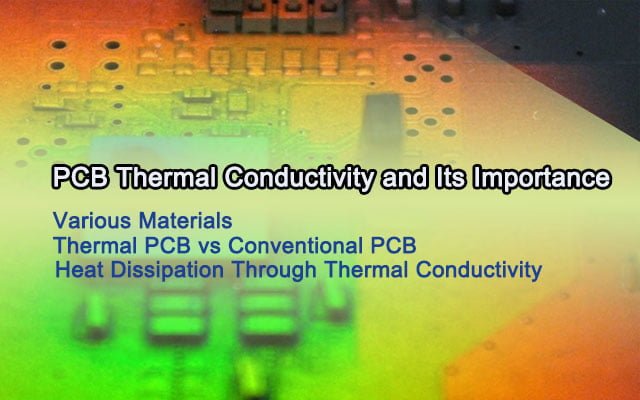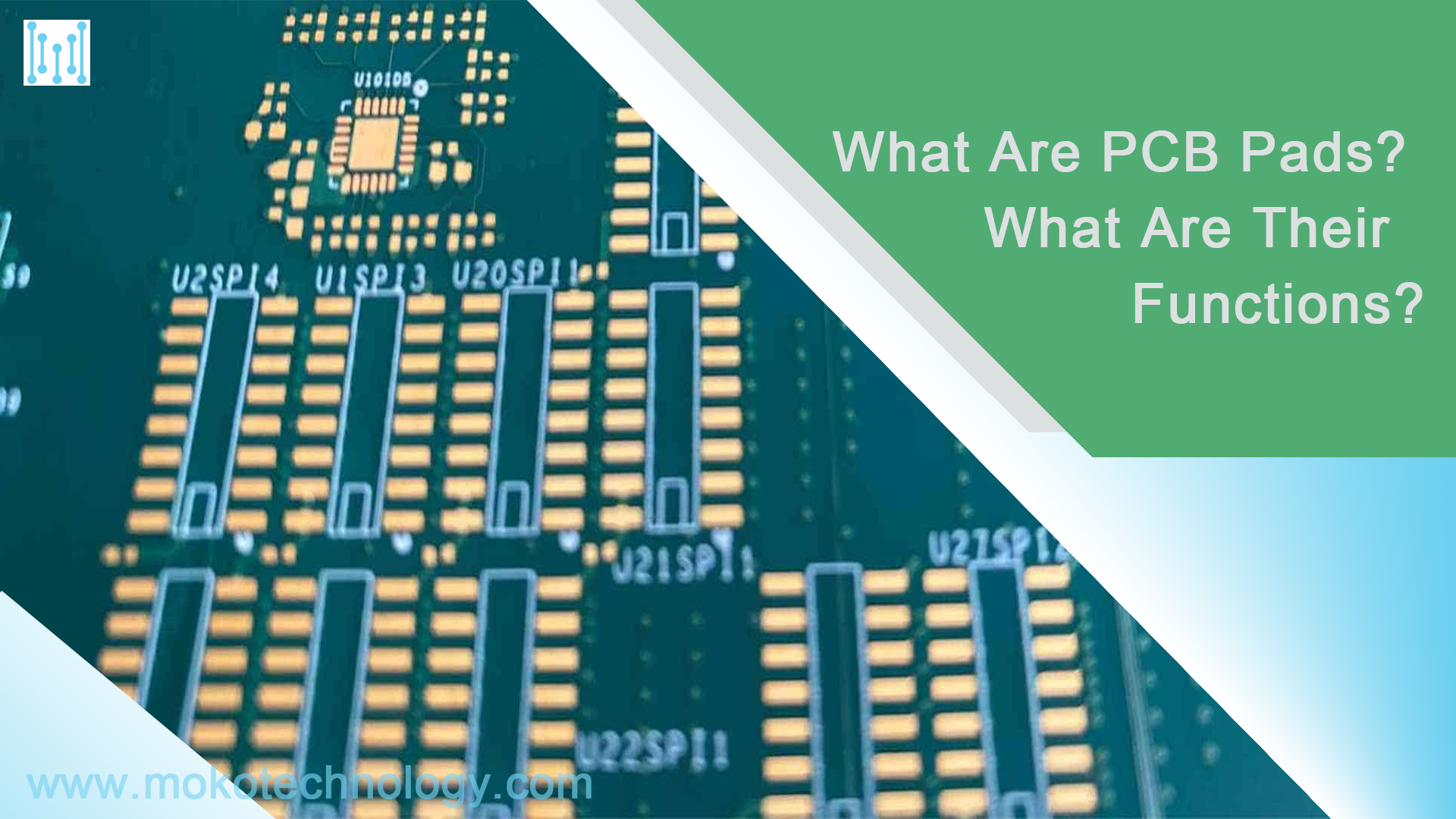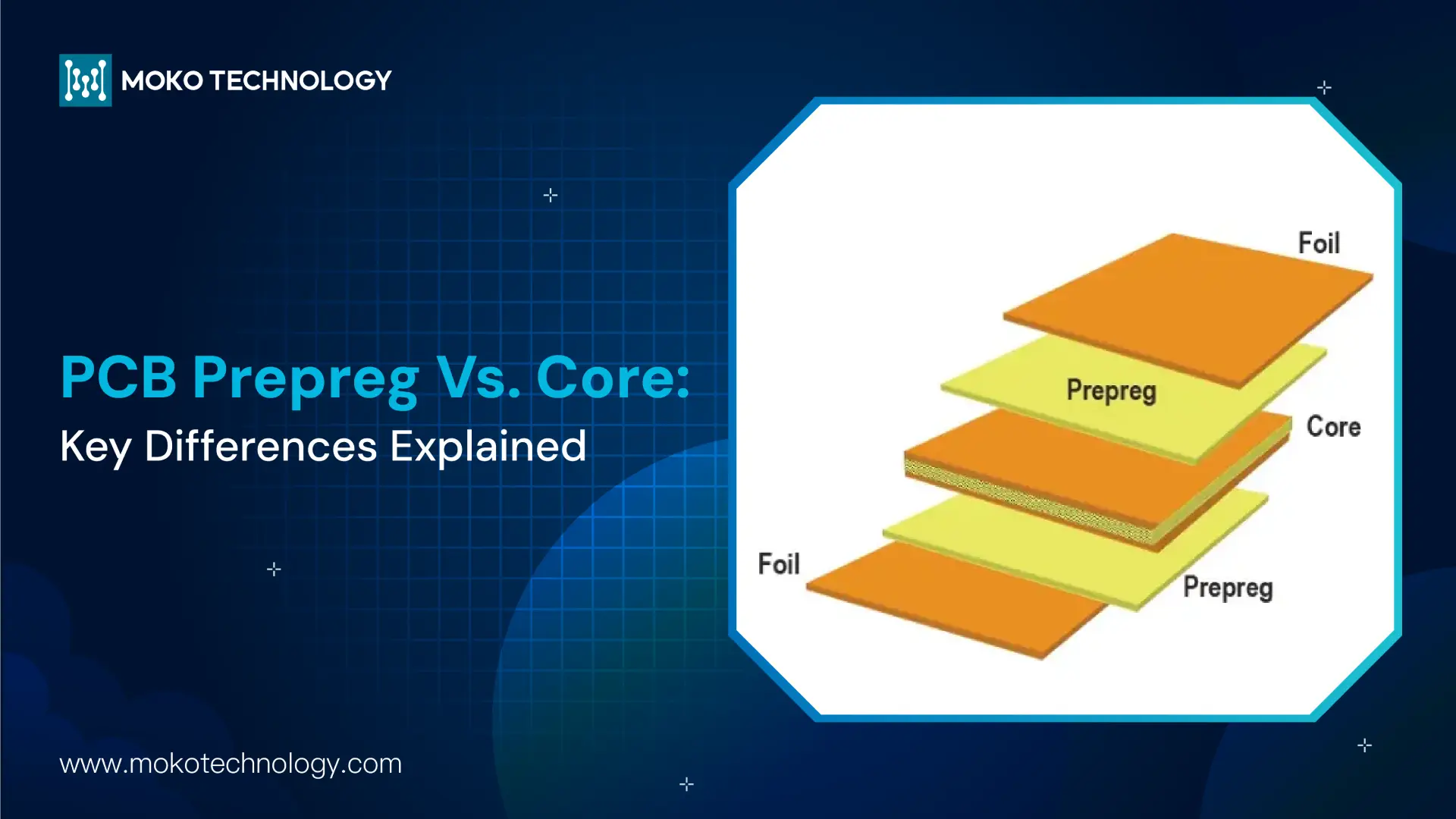The PCB thermal conductivity is its ability to conduct heat. Materials that have a lower thermal conductivity allow for a lower rate of heat transfer. On the other hand, materials with a high thermal conductivity allow for a higher rate of heat transfer. For example, metals are very effective at conducting heat because they have high thermal conductivity. That is why we frequently use them in applications where we require heat dissipation. However, materials with low thermal conductivity are suited for applications requiring thermal insulation. In this article, we will take a look at PCB thermal conductivity and how it affects their performance.
PCB Thermal Conductivity of Various Materials
In this section, we will take a look at the thermal conductivity of various PCB materials.
Epoxies and Glasses (FR4, PTFE, and Polyimide)
We mostly use FR4 for the mass production of PCB. However, in this case, PCB thermal conductivity is very low in comparison to alternative materials. Therefore, most manufacturers have to use a number of thermal management techniques and methods to maintain the temperature of PCBs and their active components with a safe operational range.
Ceramics (Alumina, Aluminum Nitride, and Beryllium Oxide)
Ceramics offer much higher thermal conductivity than epoxies and glasses. However, this higher thermal conductivity comes with higher manufacturing costs. This is because ceramics are mechanically tough and hence it is difficult to drill them mechanically or by using lasers. So, multilayer fabrication of ceramic PCB becomes difficult.
Metals (Copper and Aluminum)
We mostly use aluminum for making metal core PCB. Metals have higher thermal conductivity than epoxies & glasses and they have a reasonable manufacturing cost. Therefore, they are quite effective for applications that require exposure to thermal cycling and need heat dissipation. The metal core allows for efficient thermal relief and heat dissipation on its own and therefore we don’t need additional processes and mechanisms. So, manufacturing costs tend to decrease.
| Materials | Thermal Conductivity (W/(m·K)) | |
| Epoxy and Glasses | FR4 | 0.3 |
| PTFE | 0.25 | |
| Polyimide | 0.12 | |
| Ceramics | Alumina | 28-35 |
| Aluminum Nitride | 140-180 | |
| Beryllium Oxide | 170-280 | |
| Metals | Aluminum | 205 |
| Copper | 385 | |
PCBs With High Thermal Conductivity vs Conventional PCB
- Materials with high thermal conductivity such as ceramics and metals allow for better heat dissipation as compared to materials with low thermal conductivity such as FR4.
- Materials with low thermal conductivity require vias and through plate holes for heat removal.
- Therefore, the manufacturing steps tend to increase in the case of materials with low PCB thermal conductivity.
- So, the manufacturing process becomes complex and the costs tend to increase.
- On the other hand, materials with high PCB thermal conductivity don’t need additional processes and mechanisms for thermal relief or heat dissipations.
- Hence, the manufacturing steps and costs tend to decrease for materials with low PCB thermal conductivity.
- Materials with high PCB thermal conductivity don’t allow localization of thermal stresses. This is because heat moves through them easily and stresses are unable to segregate in one place.
- Therefore, the structure is thermally stable and these boards tend to have a longer lifespan.
- In comparison, materials with low PCB thermal conductivity hinder the flow of heat and hence they allow for stress localization.
- Therefore, they have low thermal stability and hence have a shorter lifespan.
- Since material with high thermal conductivity doesn’t need vias therefore there is more space for mounting components.
- Hence, PCB with high thermal conductivity is more dense and smaller in size.
- This allows us to make smaller and more efficient PCBs.
- It is an established fact that materials with high thermal conductivity also have a high electrical conductivity. Therefore, it is more beneficial to use materials with high PCB thermal conductivity.
- Materials which have high thermal conductivity also have a stable CTE. Which means that they show desirable thermal expansion properties. This allows us to make PCBs which are thermally as well as dimensionally stable.
- Since materials with high thermal conductivity are thermally stable therefore we can use them in extreme application because we are certain that their thermal degradation won’t occur.
Heat Dissipation Through PCB Thermal Conductivity
We are living in an era where it is possible to perform microelectronic packaging and the integration technology is readily available. Therefore, the overall power density of electronic devices is on a steady rise. However, the physical dimensions of electronic devices and electronic components are steadily decreasing. So, the generated heat is instantly segregated which leads to dissociation or disintegration of the whole electronic system.
However, the heat flux density of electronic devices is also increasing, and the high-temperature environment affects the performance of electronic devices as well. Hence, we need a more efficient plan for establishing thermal control, and we need to tackle the problem of heat dissipation head-on in order to open new avenues of PCB manufacturing.
The Solution
Engineers have come up with some strategies for solving these problems with thermal management. These include,
- Increasing the thermal conductivity of the PCB for improving the heat dissipation
- Using materials that are able to withstand higher operating temperatures. We can do this by improving the Thermal Decomposition Temperature.
- Improve the thermal adaption of the material to its environment and thermal cycling. We can do this by improving the CTE.
The most efficient strategy from these is to use material with high thermal conductivity for combating the heat dissipation. This is because these materials allow for a smooth heat transfer and heat never accumulates in one place. Hence, heat leaves the system as soon as it is generated and doesn’t damage the board. The problem only arises when there is a hindrance to heat flow and it starts accumulating. In this case, it will lead to thermal stresses and damage the PCB. That is why it is not recommended to use materials with low PCB thermal conductivity in high-end applications.
If you are facing problems with heat dissipation in your boards then you are in the right place. MOKO Technology is well experienced in the design and development of PCBs with high thermal conductivity. We can make customized high thermal conductivity PCBs for you which will meet your needs and allow for efficient heat dissipation. Feel free to reach out to us if you have any queries.



